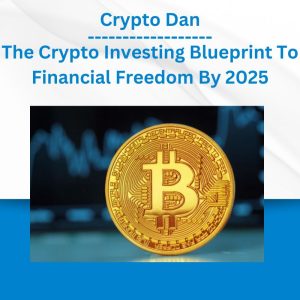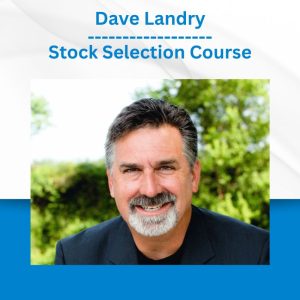*** Proof of Product ***
Exploring the Essential Features of “Centre of Excellence – Norse Mythology Diploma Course”
What Will You Learn?
The stories and people of ancient Norse myths are as complex as they are compelling and as provocative as they are pleasing. Not all the heroes behave heroically and not all monsters are genuinely evil. And while order is admired, chaos abounds.
Though many stories make up the full collection of Norse myths, the Norse Mythology Diploma Course introduces you to the primary tales that begin at the start of the cosmos and end with its complete annihilation.
The Norse Mythology Course begins with the world and beliefs of the people who originated the stories you will study – the Vikings. You will look at the particular behaviours and the firmly held spiritual beliefs of these people to gain greater insight into the stories they held dear.
The course looks at the beginning of how the Norse cosmos was created. You will be introduced to the Norse ‘tree of life’ – Yggdrasil – a symbol that was central to the universe, before moving on to discuss the creation myth and the nine realms that the Vikings believed were inhabited by gods, monsters and others.
You’ll take a look at some of the most important deities in the Norse pantheon – Odin, Thor, Loki, Freya, Baldr and Tyr. You’ll learn the gods’ characteristics, ancient attributes, and their overall roles or functions within the myths.
We explore the first war of the Norse worlds and the eventual unification between the two reigning tribes of deities – the Aesir and the Vanir. We examine the primary players in the conflict and why the myth was important to ancient Norse life.
Following the Aesir-Vanir war, there came a myth that involved the building of a wall around Asgard. A fun and engaging story, it highlights the importance of safety and order in Norse culture and the idea of people being ‘inside’ or ‘outside’ civility.
In the chronology of the Norse sagas, the myth of the Mead of Poetry takes up where the battle between the Aesir and Vanir left off. You will move through the details of the story, learning about its relevance to the Vikings as well as seeing it as a further example of Odin’s enigmatic nature and less than attractive qualities of character.
Taking a deeper look at Odin, we’ll examine two of the myths that expose his unquenchable thirst for wisdom, and what they meant both to Odin as a character and the Vikings as believers of these myths.
Loki fathered a lot of children in Norse mythology. However, three, in particular, are woven into the threads of Ragnarok. We look at who these monsters were, the stories they appear in, and how their destinies were set in motion by the very gods they were fated to destroy.
Thor is a central figure in Norse mythology. You will study two of the more significant myths concerning the god, his courage and his strength – his duel with the giant Hrungnir, as well as his extraordinary encounter with the Midgard serpent.
The Death of Baldr is an important tale in Norse mythology, as it is the event which spurred the oncoming of Ragnarok and thus the destruction of the Norse cosmos. Equally, as a tale told by ancient Norse folk, it has further relevance to their everyday lives, and that will also be explored as part of your learning.
The binding of Loki is the myth that proceeds the battle to end all days. It is engaging and horrific in equal parts and serves to highlight some particular motifs that arise again and again in Norse mythology.
All that you study in the Norse Mythology Diploma Course leads up to Ragnarok, the ending of the Norse cosmos through fire and fury. You will be introduced to a step-by-step retelling of this most wonderful and exciting of myths and explore what happened in the aftermath.
By the end of this course, you will:
Know the central Norse myths
- Have a greater understanding of the primary characters in Norse mythology such as Odin, Thor, Loki and Freya
- Know how the myths related to the lives of the Vikings
- Recognise the importance of specific Viking values such as courage, loyalty and sacrifice
- Be aware of the primary sources of Norse mythology
- Understand how the Norse cosmos was formed
- Be aware of the main monsters of Norse mythology and their role in the cosmos’ destruction
- Know what Ragnarok means and its relevance
Module 1: The Norse World
Introduction
Part 1: What Do We Really Know about the Vikings?
Part 2: The Vikings Belief in Destiny and Reverence for Valour
Part 3: Sources of Viking Life and Myths
Part 4: Non-Chronology of the Chronology
Module 2: Creation and the Cosmos
Part 1: The Cosmos and the Yggdrasil
Part 2: The Creation Myth
Part 3: The Norse Creation Myth
Part 4: The Realms of the Norse Cosmos
Video: Dwarves and Giants in Norse Mythology
Module 3: Primary Norse Deities
Part 1: The Pantheon of the Gods
Part 2: Odin the Allfather
Part 3: Thor God of Thunder
Part 4: Loki
Part 5: Freya
Part 6: Other Gods in the Norse Pantheon
Module 4: The War of Aesir and Vanir
Part 1: The Two Tribes and the Myth of Seidr
Part 2: Freya and the First War of the Mythical Norse World
Part 3: The Purpose of the Myth
Module 5: The Fortification of Asgard
Part 1: Rebuilding the Wall
Part 2: Loki’s Plan and the Beginning of the Wall
Part 3: Loki’s Shapeshifting Solution
Part 4: The Relevance of The Myth
Module 6: The Mead of Poetry
Part 1: The Mead of Poetry in Norse Culture
Part 2: The Creation of Kvasir
Part 3: Odin’s Theft of the Mead
Module 7: Odin’s Sacrifices
Part 1: Odin’s Journey to the Well of Wisdom
Part 2: Odin’s Discovery of the Runes
Part 3: Interpretation of this Myth
Video: Totem Animals in Norse Mythology
Module 8: Loki’s Monstrous Children
Part 1: Odin Summons the Children
Part 2: Hel, the Death Goddess
Part 3: The Jormungand and the Ouroboros
Part 4: Fenrir the Wolf
Module 9: The Battles of Thor
Part 1: Accounts of Thor and the Relevance of Thor’s Strength
Part 2: Thor’s Battle with Hrungnir
Part 3: Thor Battles with Jormungand
Module 10: The Death of Baldr
Part 1: Death and Dreams
Part 2: Baldr’s Death
Part 3: The Funeral of Baldr and Hermod in Hel
Part 4: The Meaning of this Myth
Module 11: Loki Bound
Part 1: Fleeing from the Scene
Part 2: Loki Captured
Part 3: Binding as a Motif in Norse Mythology
Module 12: Ragnarok – The Story of the End
Part 1: The Significance of Ragnarok
Part 2: Ragnarok Begins
Part 3: The Battle to End all Days and a New World Rises
Video: The Influence of Norse Mythology in Contemporary Culture
Who Would Benefit from This Course?
The Norse Mythology Diploma Course will lead you through the main stories of the Viking people, starting with the creation of their universe and concluding with its apocalyptical end. In between, you’ll be introduced to the primary characters who peopled these stories – the one-eyed Allfather, Odin, the fearless warrior, Thor, and, of course, the malicious trickster, Loki.
The aim of this course is not just to unfurl the tales, however, but to put them in a context of what was happening in the Viking world at the time and what ancient beliefs were reflected in the myths.
Please see the full list of alternative group-buy courses available here: https://lunacourse.com/shop/










 Centre of Excellence - Roman Mythology Diploma Course
Centre of Excellence - Roman Mythology Diploma Course  Centre of Excellence - Freelance Writer Business Diploma Course
Centre of Excellence - Freelance Writer Business Diploma Course  Centre of Excellence - Advanced Screenwriting Diploma Course
Centre of Excellence - Advanced Screenwriting Diploma Course